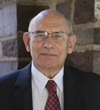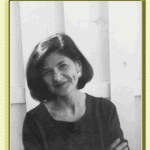Psalm 80
David A. Davis
December 3, 2023
Jump to audio
“Restore us, O God of hosts; let your face shine, that we might be saved.” Let your face shine, that we might be saved. Let your face shine. The bible has a strange relationship with the face of God. The psalmist’s repeated refrain here in Psalm 80 echoes throughout scripture. Let your face shine, that we might saved. Psalm 67 begins “May God be gracious to us and bless us and make God’s face to shine upon us.” It was the Lord who spoke to Moses giving the words of blessing for Aaron to pronounce to the people of Israel. “The Lord bless you and keep you; the Lord make his face to shine upon you and be gracious to you; the Lord lift up his countenance upon you and give you peace.” (Numbers 6). According to the Book of Exodus, the Lord spoke to Moses “face to face, as one speaks to a friend.” (Ex. 33)
But… pretty much at the same time, the Lord tells Moses “You cannot see my face; for no one shall see me and live.” So Moses speaks to God face to face, friend to friend and Moses cannot see the face of God because no one shall see the face of God and live. The face of Lord is invoked as a blessing or is it curse? Let your face shine that we might be saved. No one can see the face of God and live. When it comes to the face of God, the bible is a bit confusing.
The life threatening implication related to the face of God come in response to Moses asking to see God’s glory. That’s when God tells Moses to go stand a rock and as the glory of the Lord passes by the Lord will hide Moses in the cleft of a rock and cover Moses with a divine hand until the Lord passes by. The Lord tells Moses, “Then I will take away my hand and you shall see my back; but my face shall not be seen.” (Ex 33) My face shall not be seen. God’s glory, God’s face. God’s face, God’s glory. In the rich imagery and poetry that fills the pages of scripture, the glory of the Lord and the face of the Lord seem to be one and the same. “Restore us, O God of hosts; let your face shine, that we might be saved.” Let your glory shine, that we might be saved. Restore us, O God, by your glory.
In the gospel accounts of the birth of Jesus, we all know there is quite a bit of angel talk. The angels are busy. Matthew reports “an angel of the Lord appeared to Joseph in a dream.” (Mt 1) Luke tells of of lots of angels. The angel who appeared to Zechariah. The angel Gabriel who came to Mary. And of course, the angel who lit up the sky above the shepherds and brought “a multitude of the heavenly host.” i.e. lots and lots and lots of angels. When it comes to the If we’re honest, most of us have a strange relationship with angels. Maybe it is better to say we’re just not sure what to do with angels other than enjoying them and their attire in a Christmas pageant. On the pages of scripture, angels always come with a fear factor otherwise the appearance wouldn’t always come with “Do not be afraid.” I have always just assumed that Gabriel appeared with the same radiance as the angel who stood before the shepherds. At least that’s what artists have led me to assume. Angels. Fear. Splendor. Or as Luke puts it, “Then an angel of the Lord stood before them, and the glory of the Lord shone around them…” Even more messengers from God, the angels of the nativity reflect something of the glory of God. Yes, mid the imagery and poetry of scripture, the angels offer yet one more witness to the glory of God. of Angels are the gospel version of the psalmist invoking the face of God. An angel of the Lord. The face of the Lord. The glory of the Lord. Gloria in Excelsis Deo!
Back in Exodus, when God allows Moses to see God’s back but not God’s face, the Hebrew dictionary is pretty clear about what is meant by “back”. It is the back side, the hindquarters, the back parts. The term bears the connotation of “rear end”. But forms of the same word can carry more of a connotation of the aftermath. The backside of something that carries with it a sense of timing; afterwards, coming after, in the wake of. All the adults in the room chipping in to pick up in the aftermath of a little child’s chaos after they go to bed. On the backside of her day. Finding the treasures left behind by a grandmother after her visit. A note. A card. A trinket. A dollar. Enjoying the backend of Grandma’s visit. Basking in the glow, still offering a shout after the parade passes by. A shout from the backside of the parade. Moses and the backside of God’s glory; the wake of God’s glory, the leftovers, the crumbs of God’s glory.
The experience of God’s glory takes an incredible turn with these angels. The angel talk in the Luke and Matthew provides the first set in the evolving experience of God’s glory. The Apostle Paul builds upon the angel talk and takes the understanding and experience of God’s glory one step further in writing to the Corinthians: “For it is the God who said, ‘Let light shine out of darkness, who has shone in our hearts to give the knowledge of the glory of God in the face of Jesus Christ.” (II Cor 4) The glory of God in the face of Jesus Christ. Let your glory shine, O Lord, that we might be saved. With the angels, the invitation to experience God’s glory comes not on the backside but out in the front. The angels tell of the now and future glory of God. Not the crumbs of God’s glory but the full radiance of God’s glory come down in and through Jesus Christ. The Lord’s glory not in the past but the Lord’s glory in all of its divine abundance in the Child Jesus and his life, death, and resurrection.
An encounter with these angels of the Nativity is an encounter with God’s glory. The reaction to and encounter with the glory of God, the face of God, moves from curse or fear to wonder and exuberant praise. God’s glory on display results in worship and wonder for Zechariah, and Mary, and the shepherds. God’s glory revealed elicits our praise, our worship, not our fear but our wonder. Let your glory shine, O God, that we might be saved.
Martha Moore-Keish, a professor from Columbia Seminary offers an interesting twist on the angels and their song, Gloria In Excelsis Deo. She points out that the shepherds themselves were somehow moved or changed by the vision and voice of the heavenly host. They went to Bethlehem only after the heavenly light show of praise. When they returned, glorifying and praising God for all that they had heard and seen, they would have been talking not just about Mary and Joseph and the babe, but about that angel song too. Because, after all, that Gloria helped them to see Jesus. Maybe we need to reverse our ordinary ordering when it comes to singing gloria, Professor Moore-Keish suggests. Instead of recognizing the birth of Jesus and then bursting into song, maybe we hear and sing “Glory to God” and are therefore moved, changed, enabled, empowered, blessed, restored to see, as the professor puts it “the entrance of Jesus into our world.”
God’s glory, God’s face, and our act of praise. The celebration of the Lord’s Supper is an act of praise. Yes, it is remembering, it is communing, it is receiving, it is giving thanks. But it is also an act or praise. “Accept this our sacrifice of praise, O God, for great is the mystery of faith. Christ has died. Christ has Risen. Christ will come again.” Once again this Advent, in the telling, in the singing, in the feasting, in the shouting, let our Gloria burst forth that our hearts might be filled with the knowledge of the glory of God in the face of Jesus Christ. Our worship and wonder in the power of the Spirit and by God’s grace enabling, inspiring and empowering one another and others to see not simply a baby Jesus, but to see and to experience and to live into the world that God so loves, the world into which Jesus was born, the world for which Jesus died and rose again. “Restore us, O God of hosts; let your face shine, that we might be saved.” The face of God, The glory of God. The song of angels. And God’s glory shining in the face of the child Jesus.
Over in my office, I have a table of pictures of family and friends. My clergy prayer group I have been with for 35 years. My dear friend Rabbi Feldman and me at our daughter Hannah’s wedding. Other wedding pictures. Vacation pictures. Mostly pictures of our kids and now grandchildren. I have a picture of Hannah when she was 3 or 4 years old dressed as an angel for a Christmas pageant. You can see the costume. It is every angel’s costume ever. White choir surplus, a tiny garland ring on her head for the halo. Hannah has a finger in her mouth. She is smiling and looking right at the camera. The flash of the camera gives her halo an unforgettable sparkle, a twinkle, a shine. That toddler angel is now a mother of two.
Maybe we’re not sure what to do with angels other than enjoying them and their attire in a Christmas pageant. But when I think of the whole host of little angels everywhere who put on a white surplus and a halo and learned to sing glo-o-o-ria, or all the wise ones who put on a hat from burger king, or all the shepherds who brought a bathrobe from home, or all the Marys who held the baby Jesus and Josephs were just glad they didn’t have a speaking part, when I think of all those who whether they knew it or not, led congregation after congregation, generation after generation in hearing and singing “Glory to God”. Angels in white surpluses and twinkling garlands leading the followers of Jesus as they are once again moved, changed, enabled, empowered, blessed, restored to see “the entrance of Jesus into our world.”
In every generation, those pageant characters now grown, that motley crew who tell again and again of the Savior’s birth, they become the hands and feet of Jesus as he works to restore, to save, to make his face to shine. Angels always looking to point to, witness, and reveal the once and future glory of God. You, me, and the angels all around us.
“Restore us, O God of hosts; let your face shine, that we might be saved.”










